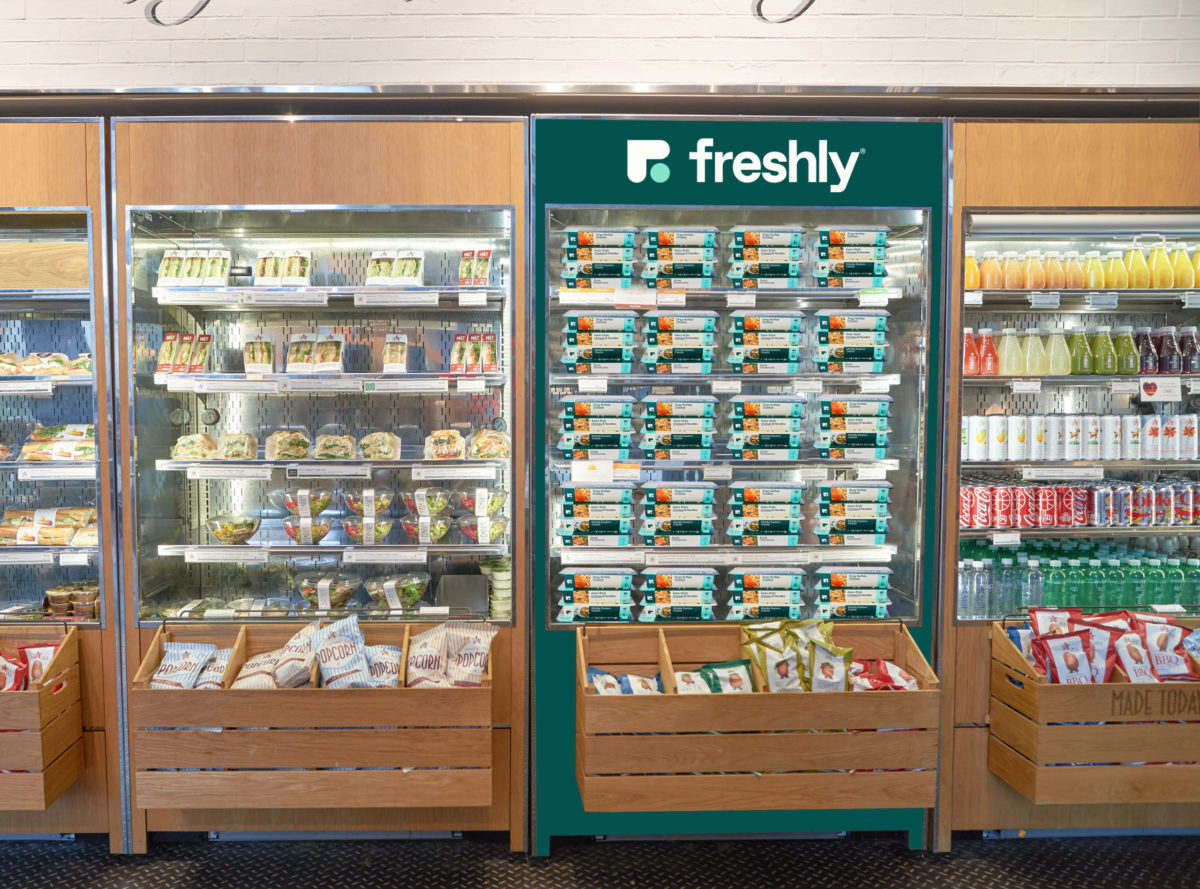As workplace well-being becomes a nonnegotiable, startups are moving in on the corporate wellness industry that’s expected to top $94B by 2026.
But, while gym collectives, personal training, wearables, and mental health all trend up, very few are tackling accessible and affordable nutrition.
We caught up with Tom Futch, vice president of FreshlyWell—a new B2B extension of the healthy meal delivery service Freshly—on making nourishment more convenient.
Why is Freshly targeting the B2B market?
Tom Futch: FreshlyWell is an extension of Freshly’s founding vision: to make eating better effortless in a world where convenience equals compromise. Establishing ourselves in the B2B space allows us to impact more people with this mission and reach them in new ways.
Why did you chose to focus on employers, healthcare, higher ed, and seniors?
TF: We’re focused on these sectors because research continuously shows they’re the ones who would benefit most from convenient access to healthy food. For organizations across a range of industries, providing their people with proper nourishment is no longer a consideration; it’s a necessity.
When it comes to employers, for example, today’s landscape has sparked renewed conversations around corporate wellness. The expectations for how a company chooses to support the well-being of its employees have grown immensely since the start of the pandemic.
We know that 80% of employees say they would keep a job with good benefits rather than take one that offered more pay. And the quality and variety of food offered at work are often listed as significant factors in accepting a job or staying there. Of note, proper nutrition has also been linked to increased productivity.
With healthcare systems, an estimated one in five healthcare workers have quit since the pandemic began; and we know that only about half of nurses have access to healthy food during work.
In response, institutions across the country are working hard to keep their frontline workers happy and fulfilled — removing barriers to wellness on the job and increasing overall satisfaction in an effort to retain staff.
We think a lot about communities that are most susceptible to food insecurity as well. Studies show that 5.2M seniors across the US are food insecure. As the population ages faster than at any other time in history, so does the need for thoughtful care prioritizing the health and wellness of seniors.
And, interestingly, we see a similar need with student populations across the vast majority of our colleges and universities.
How are enterprise partnerships structured?
TF: FreshlyWell works with employers, organizations, and member communities to provide their people with access to our meals through a range of customized programs that put health and convenience front and center.
Because we know that each organization has its own nuanced needs, we don’t offer a one-size-fits-all solution. In light of our new “hybrid” normal, our offerings can be tailored to both on-site and at-home environments.
Our on-site options include bulk orders for cafés and micromarkets, as well as our new Freshly Smart Fridge. For those with communities at home, the programs look quite similar to our DTC delivery service, just with subsidies or discount offers provided by the company or organization.
For employers, the impact of corporate wellness initiatives can be difficult to quantify. How does FreshlyWell define success?
TF: We look at success in a number of ways. Going back to our mission of providing access to healthy food for more people, the sheer number of individuals we can impact through our FreshlyWell business is one we’ll be tracking.
More specifically, with our at-home delivery solutions, we’re measuring engagement rates of each program based on subsidy redemptions. For example, an early pilot program we did with Northwell Health, New York’s largest healthcare provider, garnered an employee engagement rate of 70%.
For our on-site solutions like the Smart Fridge, we’re able to rely on data and engagement tracking since each meal will be affixed with an RFID sticker. Additionally, our partners are able to view important metrics via their organization’s dashboard — including meal shelf life, meal selection, and meal preferences.
What food and nutrition trends are you tracking?
TF: One of the trends we’ve been keeping an eye on is “quiet quitting” and how organizations are working to offer more holistic benefits—including expanding programs to unique physical and mental health offerings—in order to get employees back into the office and retain top talent.
We’re tracking trends in food contact service, recognizing the growing demand in this sector for innovative mealtime offerings for clients, from corporations to healthcare systems.
Convenient and streamlined grab-and-go options—such as self-serve checkout—are also on the rise.
Lastly, we very much believe in the ideology that food is medicine — and see an opportunity for integration into health plans for employer groups and Medicare/Medicaid members alike.
Anything else you’d like readers to know?
TF: We want to be part of the change people are demanding. In a world where health challenges are a real concern, we believe providing healthy nourishment and supporting well-being should be an everyday reality.



